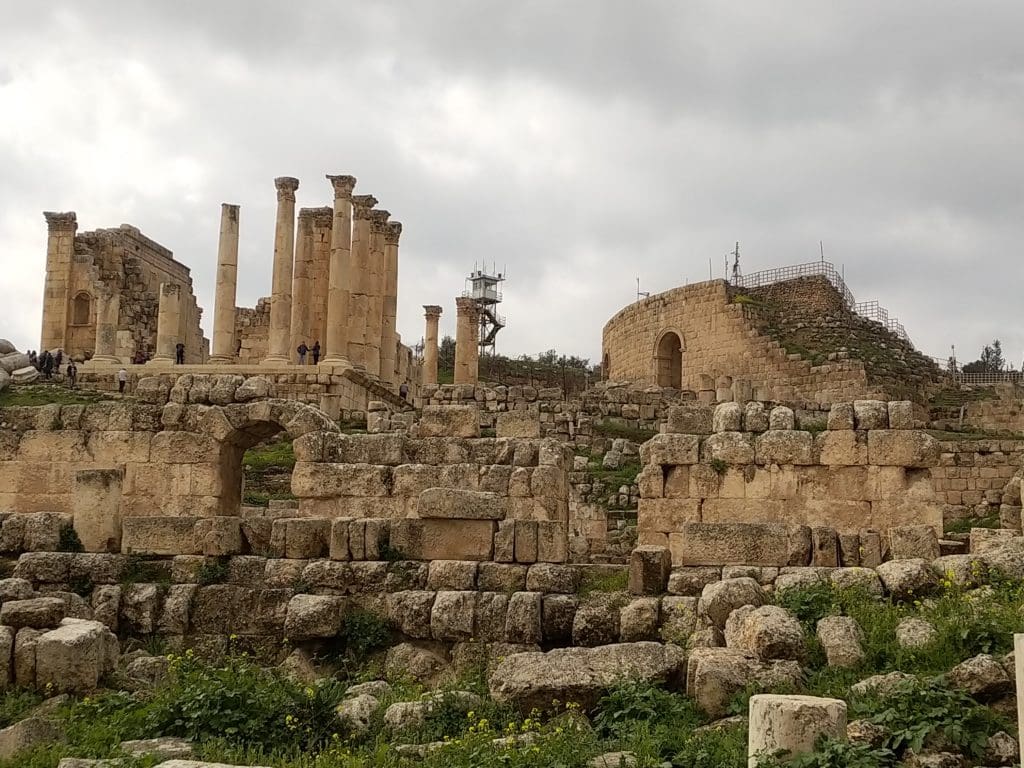 In the first century BC, the ancient city of Jerash came under Roman rule and became one of the ten great cities of the Roman Decapolis. Today, it’s considered one of the best-preserved Roman cities outside of Italy. For anyone interested in history, architecture, and archeology, Jerash is a fascinating site you should not miss when visiting Jordan.
In the first century BC, the ancient city of Jerash came under Roman rule and became one of the ten great cities of the Roman Decapolis. Today, it’s considered one of the best-preserved Roman cities outside of Italy. For anyone interested in history, architecture, and archeology, Jerash is a fascinating site you should not miss when visiting Jordan.
In antiquity, the city was known as Gerasa. It was founded by Alexander the Great (c. 356-323BC) although the fertile region has been inhabited by humans for over 6,500 years. During Roman rule (63BC-749AD), it was a prosperous, urban city with impressive Greco-Roman architecture located on the eastern frontier of the empire. But in 749AD, an earthquake destroyed most of the ancient city and its notable buildings. The ruins lay buried for over 1,000 years until a German researcher, Ulrich Jasper, discovered them in 1806.
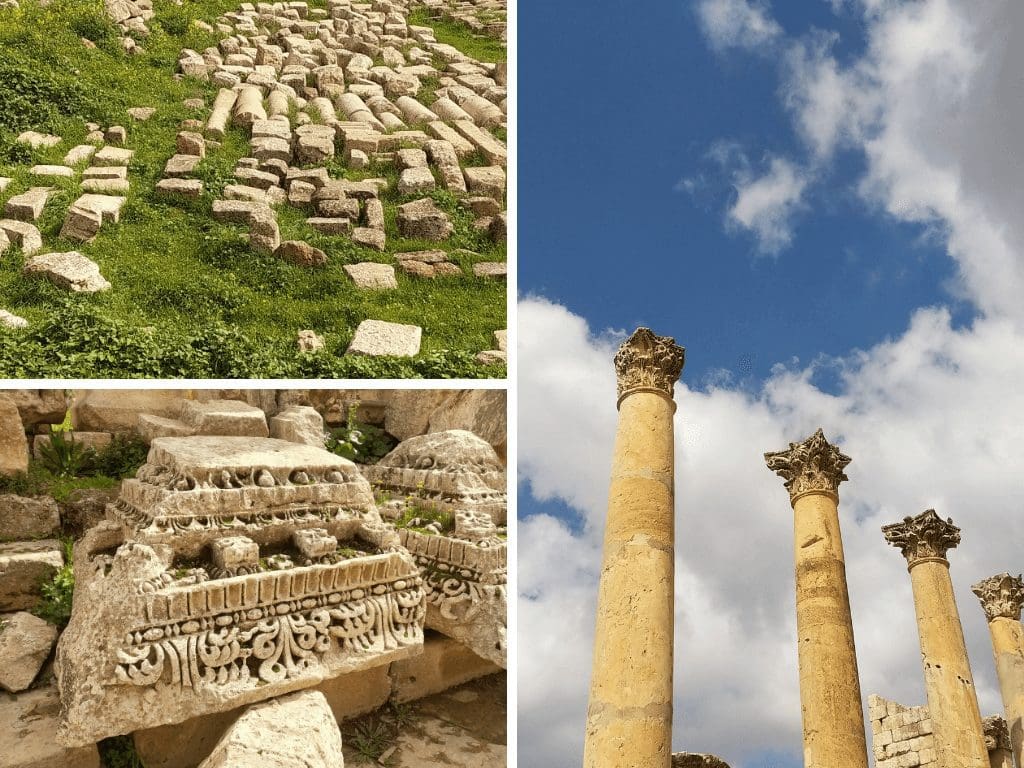 Excavation and restoration of the ruins have slowly, yet consistently gone on since 1925. Aiding those efforts is the fact that when many of the stones were quarried 2,000 years ago, they were numbered according to architectural plans before being transported to the building site. Those markings make the rebuilding puzzle much easier.
Excavation and restoration of the ruins have slowly, yet consistently gone on since 1925. Aiding those efforts is the fact that when many of the stones were quarried 2,000 years ago, they were numbered according to architectural plans before being transported to the building site. Those markings make the rebuilding puzzle much easier.
Jerash Ruins – Vestiges of a Great Roman City
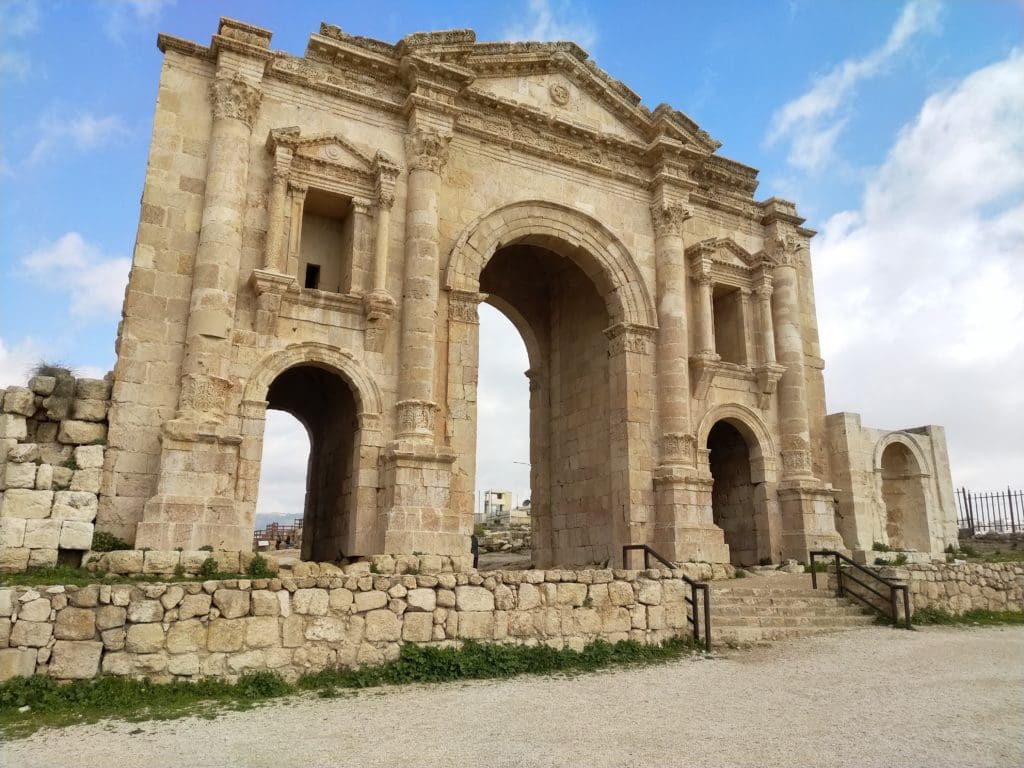
Entering from the south, a visitors’ first view of Jerash is an enormous triple archway known as Hadrian’s Arch. It was built in 129AD to honor the Emperor Hadrian’s visit. The large central arch was for the chariots while pedestrians used the smaller archways – one for noblemen and the other for commoners.
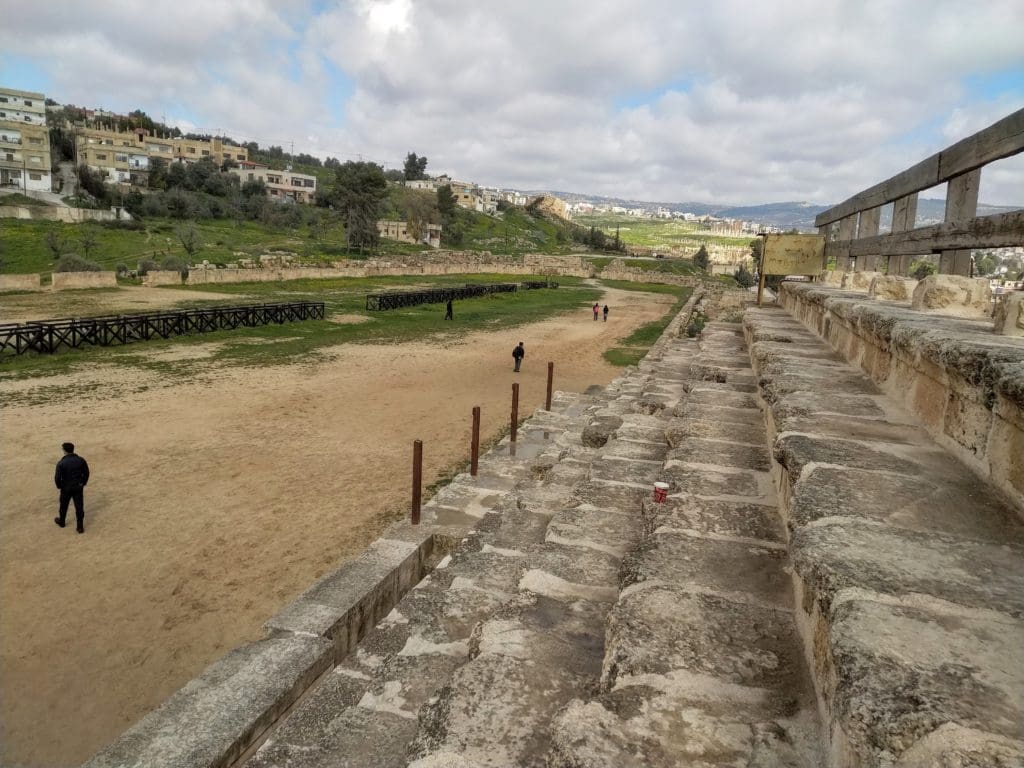
The Hippodrome is a Roman stadium where chariot races and gladiator events took place. It could hold 15,000 people and is the smaller of the two Jerash arenas. Travel Maestro tip: Don’t miss the Roman Army and Chariot Experience (RACE). 24 costumed legionnaires demonstrate their battle formations then engage in ferocious (mock) gladiator combat. The finale is a very real race of two-horse chariots seven laps around the Hippodrome. (No show Tue. or Sun.)
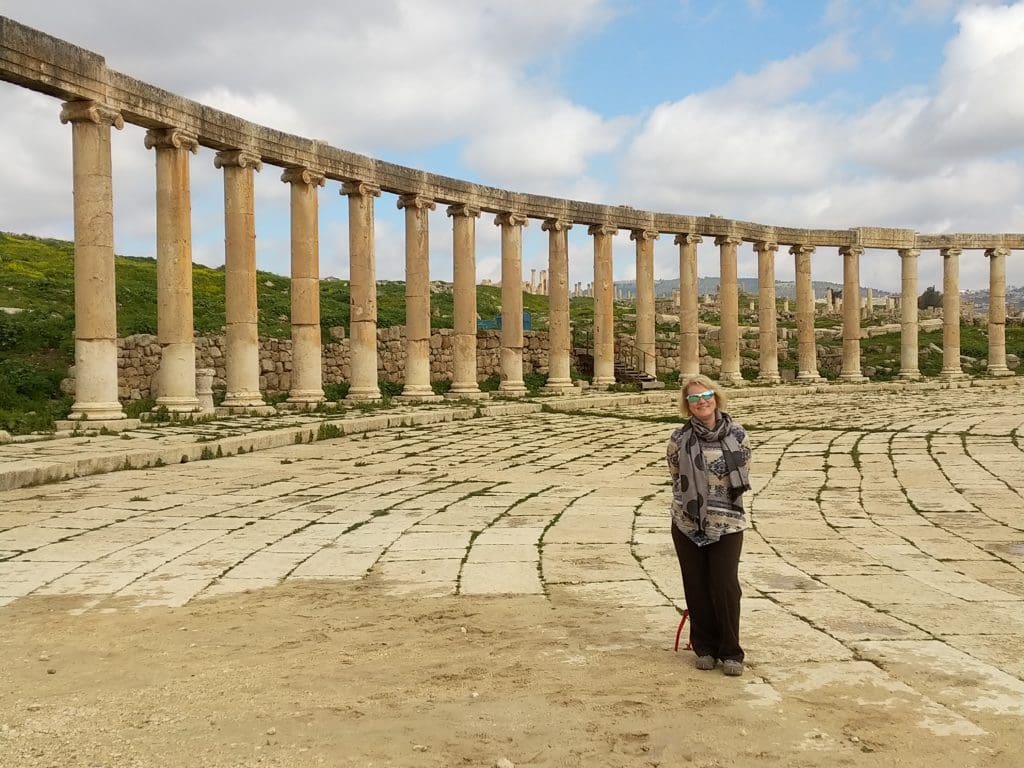
The Oval Forum is a magnificent public plaza paved in limestone and surrounded with Ionic columns. I could close my eyes and imagine this huge plaza buzzing with ancient Roman merchants, shoppers, and noblemen going about their daily life!
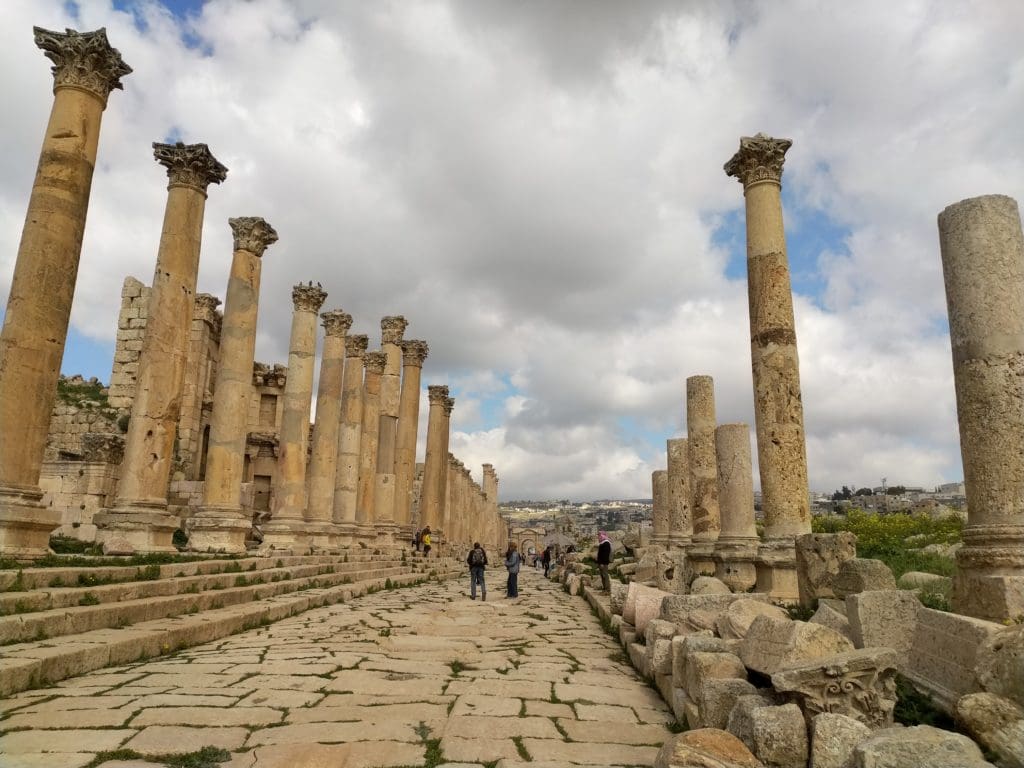
The Cardo Maximus was a grand colonnaded street that ran 800 meters through the city, bearing witness to a once flourishing civilization. The imposing columns were ornate Corinthian style and the Agora (shops) lined both sides of the wide street. Incredibly, a 2,000-year-old underground sewage system ran beneath the street and drained rainwater from the surface. Deep grooves worn into the ancient cobblestones attest to hundreds of years of chariot and wagon traffic.
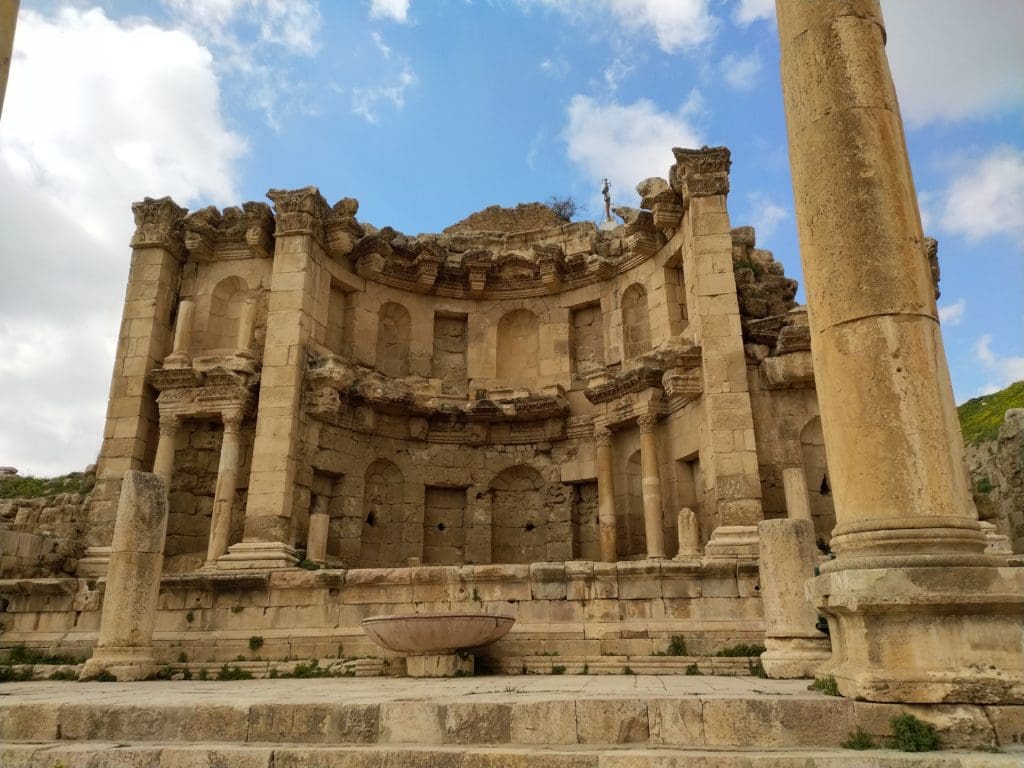
Along the Cardo, the Nymphaeum was an ornate public fountain dedicated to the Nymphs. Public fountains were a gathering place and water source for Jerash residents. Its two-story embellishments include carved lions’ heads that spouted water into basins at the sidewalk level.
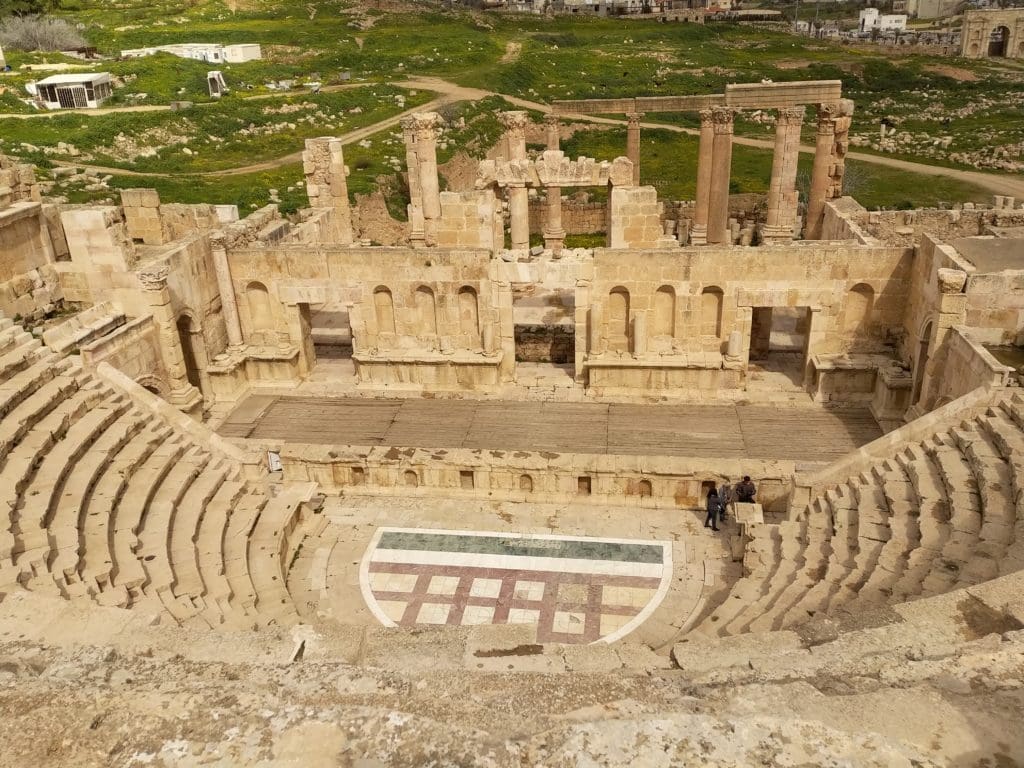
The South Theater seats more than 3,000 spectators on steep stone seats. It was built in the first century AD and is still used today for the annual Jerash Festival of Culture and Arts. Travel Maestro tip: The acoustics are so remarkable that a speaker can speak in a normal voice from the center of the orchestra floor and be heard by the entire amphitheater. Try it!
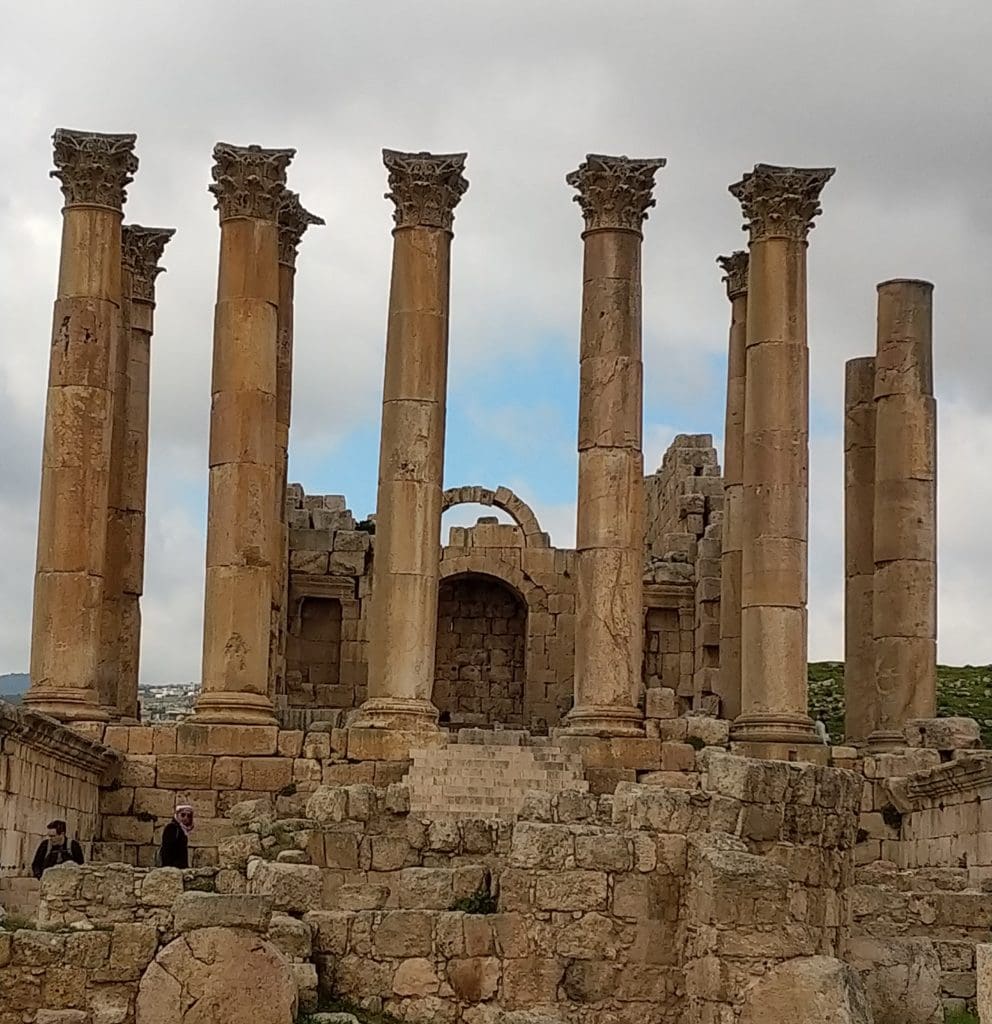
The Temple of Artemis was dedicated to the patron goddess of Jerash. The small temple’s columns remain, but the marble slabs and shrine from the interior were dismantled in 386 to build churches. Travel Maestro tip: There are more than a dozen church ruins in Jerash, some with mosaics still intact. The masterwork mosaics on the floor of the Church of St. Cosmos and St. Damian are the most impressive in Jerash.
Visiting the Ruins
Jerash lies only a short drive north of Jordan’s capital, Amman. It’s an intriguing historic site that is definitely a must-see in Jordan. The ruins cover a large area, but you can easily walk the whole site in a half day tour. Travel Maestro tip: The summer months can be brutally hot. Wear a hat and take water. To avoid the extreme heat, visit in mid-spring or fall.
To find out more about Jordan and to plan your own visit, contact the vacation experts at Covington.







Leave a Reply